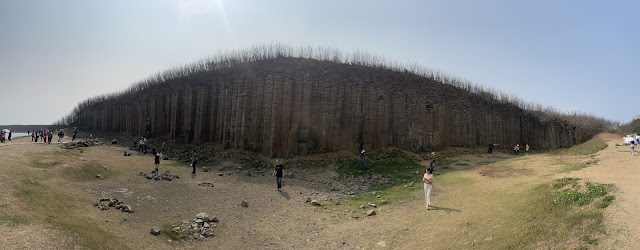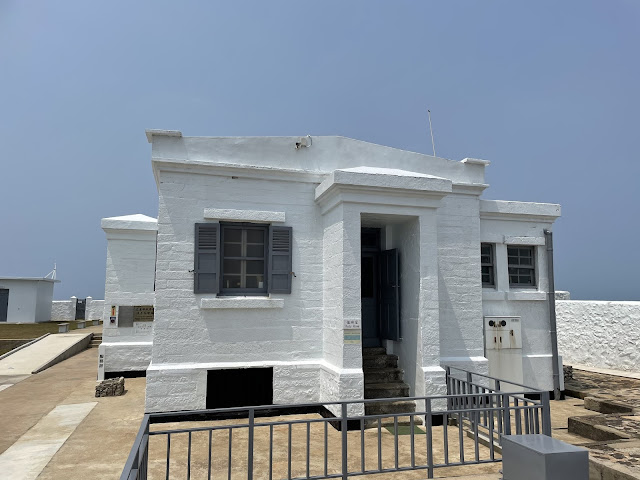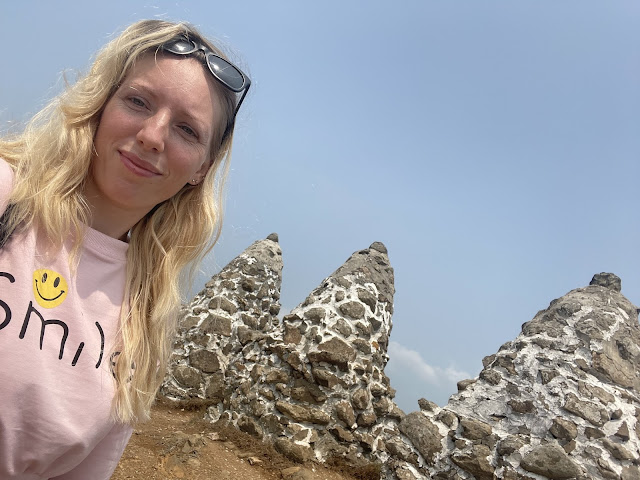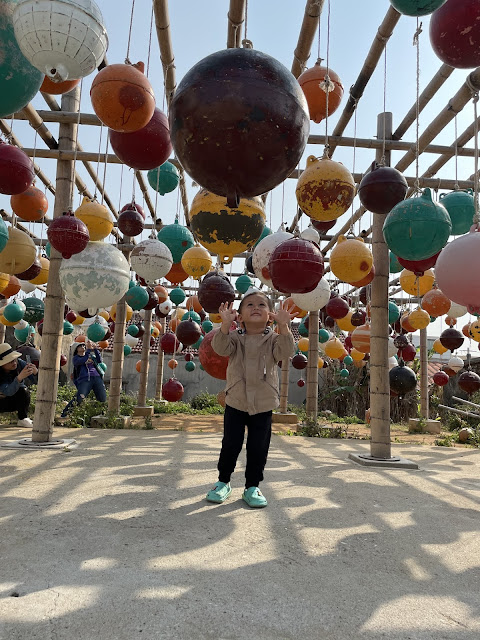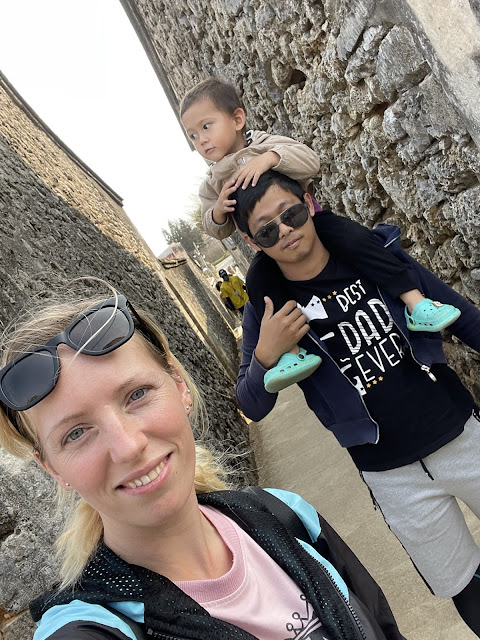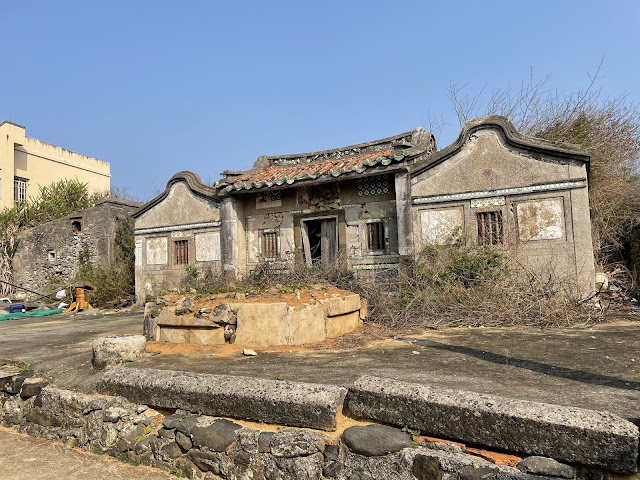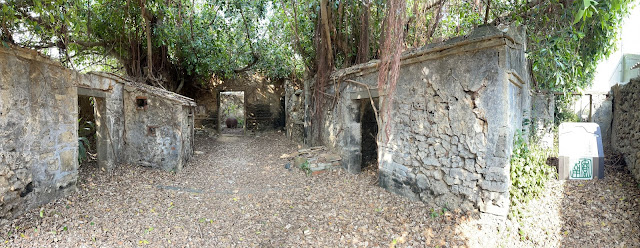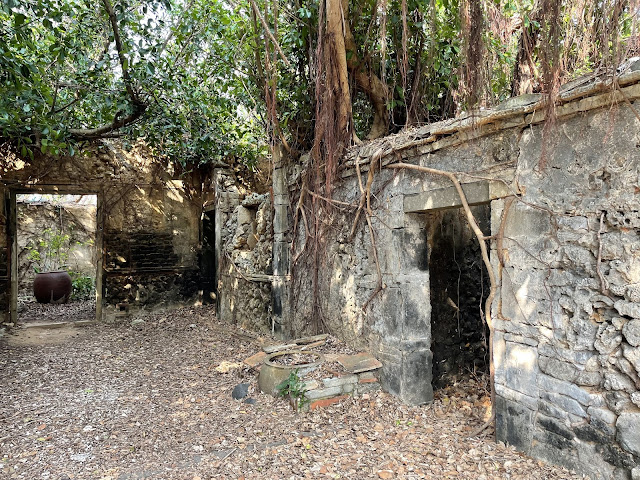It's our first time visiting Penghu, and I'll describe the process, prices, our accommodation, and the places we visited in separate posts as I have a lot planned.
We started by visiting the historical Ash Kilns and the famous attraction known as "Moses Parted the Sea," where we witnessed the low tide creating a pathway to a nearby small island. We also explored Nanliao Village, renowned for its traditional fishing settlement, with many interesting buildings to see.
In addition to the main island, we ventured to the smaller islands connected by sea-crossing bridge. On Yuwengdao Island in Xiyu Township, the furthest island, we visited the Yuwengdao Lighthouse, the Sanxian Pagodas with their breathtaking views of the sea, and observed the fake cannon. We also enjoyed the natural beauty of Daguoye Columnar Basalt, Niuxin Mountain and Paradise Road. In Xiyu, there are several forts worth exploring, such as the Western Fort, Eastern Fort, and the Five-hole bunker.
Zhuwan Temple left me with mixed feelings as I enjoyed seeing the turtles but felt sorry for them living in captivity underground.
Chen Erkan Historical House, along with the entire village of unique old buildings, is a famous place to visit in Penghu.
Going south on Magong Island, we explored the remains of a Dutch castle (actually a memorial), as well as the South and North Pagodas, which have unique and intriguing designs, though their exact story remains unknown.
Magong City is also filled with historical architecture. We explored Zhongyang Old Street, old wells, Mazu Temple, and the sole remaining city gate.
We discovered a place in Penghu where you can interact with starfish and sea urchins, which was particularly interesting for kids as they could learn more about the underwater world.
Another fort we visited, Jinguitou Fort, was once used to defend the island of Penghu.
For those interested in temples and religions, the Confucius Temple is worth a visit.
In just four days, we experienced an incredible amount. Penghu is truly beautiful, and I hope to revisit someday in the future.
Niusin Mountain (牛心山)
Niusin Mountain (Niuxinshan) is situated in Nei'an Village, Xiyu Township. It stands alone by the bay, and its unique shape attracts many tourists. The top of the mountain is composed of bare basalt, while the area from the basalt to the foot of the mountain is covered with blanket flowers and various types of weeds. It's one of landmarks of Penghu.
The mountain derives its name from its unique shape, which resembles the shape of a cow's heart. The name "Niusin," means "cow's heart" in Chinese. This distinct shape has made Niusin Mountain a popular tourist attraction and a symbol of natural beauty in Penghu.
The mountain is characterized by its bare basalt top, which adds to its distinctive appearance.
Niusin Mountain offers visitors the opportunity to enjoy panoramic views of the surrounding bay and the azure waters of the ocean. It's a great spot for nature enthusiasts, hikers, and photographers. The hike to the top of the mountain is relatively easy.
The mountain is also a popular spot for sunrise and sunset viewing.
See also: Ash Kilns & Moses Parted the Sea
Daguoye Columnar Basalt (池東大菓葉玄武岩)
Daguoye Columnar Basalt was discovered during the Japanese Occupation when a wharf was being constructed at Daguoye Beach to connect Magong and Xiyu by sea. During the excavation, this magnificent columnar basalt, which had been buried in the soil for thousands of years, was accidentally unearthed. It's the only easily accessible columnar basalt formation in the area.
Columnar basalt is a type of volcanic rock that forms when lava cools and contracts, causing it to crack and form distinct polygonal columns. The columns at Daguoye are particularly striking, with their hexagonal shapes and well-defined edges. The basalt columns stand tall and uniform, creating a mesmerizing natural spectacle.
Continuing further uphill, you will come across another similar site called Sānshíbì (三石壁).
Heart-shaped Fishing Trap (池西虎目滬)
Chixi Tiger Eye Fishing Trap, also known as the heart-shaped fishing trap, is a unique spot that cannot be seen from the ground. However, if you have a drone, it offers a beautiful view.
Penghu Great Bridge (澎湖跨海大橋)
Penghu Great Bridge, also known as the Penghu Cross-Sea Bridge, is a significant landmark in Penghu. It's a long bridge that connects several islands within the Penghu archipelago, providing a convenient transportation link for locals and visitors alike.
The bridge spans across the sea, offering breathtaking views of the surrounding turquoise waters and the scattered islands of Penghu. It serves as an important transportation route, connecting the main island of Magong with other islands such as Xiyu, Baisha, and Siyu.
Penghu Houliao Tiantang Road (澎湖後寮天堂路)
Penghu Houliao Tiantang Road, also known as Houliao Paradise Road, is a scenic coastal road that offers stunning views of the coastline, featuring beaches, cliffs, and crystal-clear waters. It's a popular destination for leisurely drives or cycling trips, allowing visitors to immerse themselves in the natural beauty of Penghu.










